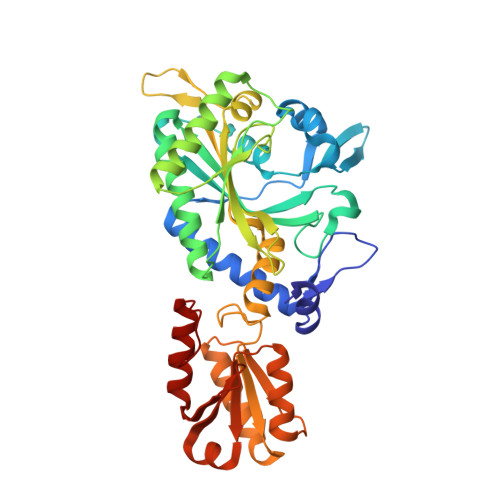Transfer RNA-mediated editing in threonyl-tRNA synthetase. The class II solution to the double discrimination problem.
Dock-Bregeon, A., Sankaranarayanan, R., Romby, P., Caillet, J., Springer, M., Rees, B., Francklyn, C.S., Ehresmann, C., Moras, D.(2000) Cell 103: 877-884
- PubMed: 11136973
- DOI: https://doi.org/10.1016/s0092-8674(00)00191-4
- Primary Citation of Related Structures:
1FYF - PubMed Abstract:
Threonyl-tRNA synthetase, a class II synthetase, uses a unique zinc ion to discriminate against the isosteric valine at the activation step. The crystal structure of the enzyme with an analog of seryl adenylate shows that the noncognate serine cannot be fully discriminated at that step. We show that hydrolysis of the incorrectly formed ser-tRNA(Thr) is performed at a specific site in the N-terminal domain of the enzyme. The present study suggests that both classes of synthetases use effectively the ability of the CCA end of tRNA to switch between a hairpin and a helical conformation for aminoacylation and editing. As a consequence, the editing mechanism of both classes of synthetases can be described as mirror images, as already seen for tRNA binding and amino acid activation.
Organizational Affiliation:
UPR 9004 Biologie Structurale IGBMC, CNRS/INSERM/ULP BP163 67404 Cedex, Illkirch, France.
















